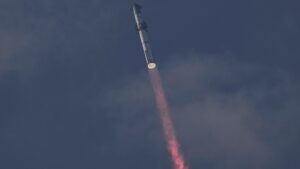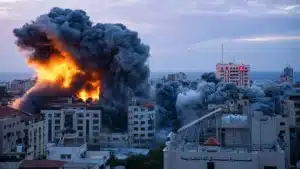The Lahaina Wildfire: Causes and Consequences of a Devastating Blaze in Maui
In recent days, Hawaii has witnessed one of the most heart-wrenching disasters in its history. A ferocious wildfire has left a profound mark on the island of Maui, explicitly decimating the historic town of Lahaina. The fire’s grim toll has escalated past 90, making it the deadliest U.S. wildfire in over a century.
Context and Scope
Governor Josh Green painted a haunting picture of Lahaina, revealing that there’s “very little left” after the fire consumed over 2,700 structures in the town. He grimly anticipated an even higher death toll, stating, “The fire was so hot that it’s hard to recognize anybody.”
Underlying Conditions and Cause
While the exact origin of the fire remains elusive, there were clear indications that a catastrophic event was impending. Due to prolonged dry conditions, the National Weather Service had placed much of Hawaii under a red flag warning, rendering the vegetation exceptionally flammable. Maj. Gen. Kenneth Hara, commander general of the Hawaii Army National Guard, highlighted these dry conditions combined with low humidity and strong winds as prime contributors to the fires.
Beyond the dry conditions, other weather elements played a crucial role. Governor Green emphasized that the wildfires are the unfortunate outcome of a cocktail of global warming, prolonged drought, and an offshore superstorm. In particular, the National Weather Service identified Hurricane Dora, a Category 4 storm, as a significant factor. Although it was several hundred miles south of the Hawaiian islands, it generated strong wind gusts of over 60 mph. These gusts wreaked havoc in Maui, leading to fallen power lines and significant property damage.
Power Company Controversy
Amid the chaos, concerns arose about the response of the power company Hawaiian Electric, which serves the majority of the state. Reports suggested that the company may not have taken all necessary safety precautions to mitigate wildfire risks in the face of the approaching storm. The Washington Post reported that Hawaiian Electric allegedly did not shut off power to areas predicted to experience strong winds, a move that could potentially ignite fires.
Maui Electric emphasized its extensive wildfire mitigation measures in defense, including vegetation management, grid hardening, and thorough inspections. The company also mentioned protocols to prevent automatic circuit reclosure during high winds.
Emergency Response and National Guard Deployment
Reacting to the escalating crisis, Acting Hawaii Governor Sylvia Luke proclaimed an emergency, deploying National Guard troops. Unfortunately, by Tuesday evening on August 8th, the rising wind gusts had grounded National Guard helicopters, hampering the immediate response.
President Biden, recognizing the gravity of the situation, approved a federal disaster declaration.
The Bigger Picture
The National Weather Service, before the outbreak of the fires, had already signaled the potential danger. They noted a significant pressure difference between Hurricane Dora and the air north of Hawaii, which led to a pressure gradient. This gradient and the existing dry conditions posed a severe threat of fires and damaging winds.
With its devastating impact, the Lahaina wildfire stands as a testament to the unpredictable and compounded effects of various factors, ranging from global warming and natural weather patterns to infrastructural decisions. The tragedy underscores the pressing need for preemptive actions, comprehensive planning, and improved infrastructure resilience in the face of changing global conditions.







